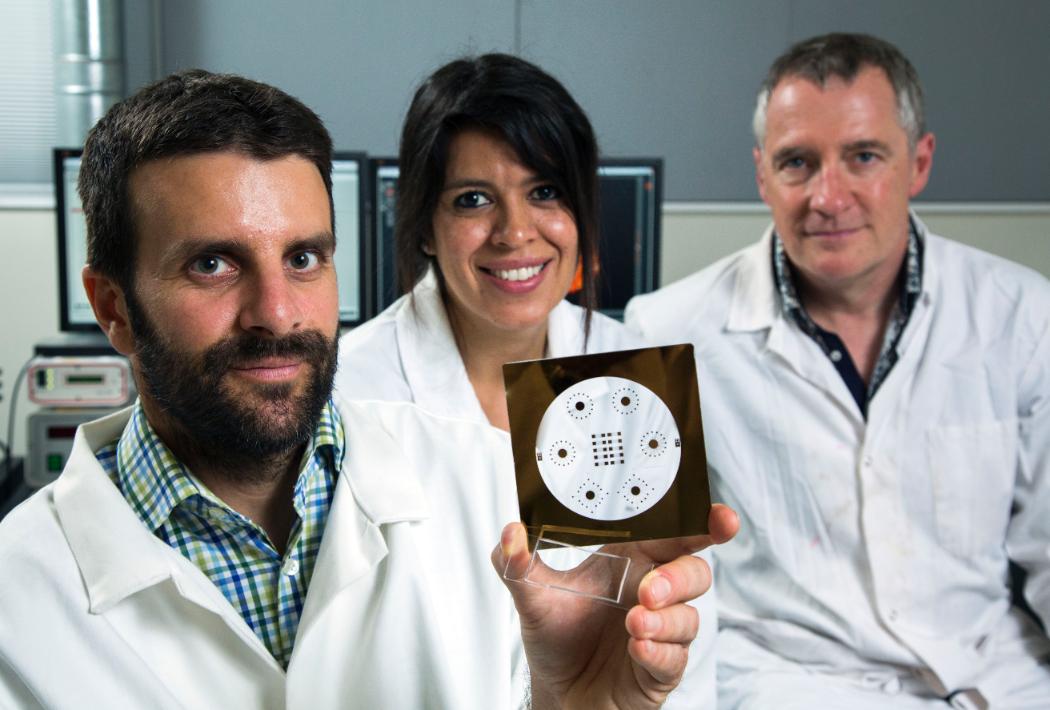A wide range of research is carried out within the Department. Links to the research groups are given below. Please contact staff involved to learn more about their research.
Research groups and laboratories
The Acoustics Research Group's primary research is in Synthetic Aperture Sonar (SAS), a technique for high-resolution undersea imaging. They design and build their own sonars for collecting field data; so far they have collected data in Lyttelton, Auckland and Sydney. Their research concentrates on fast-reconstruction, interferometry, positioning, simulation, and autofocus.
Academic staff: Emeritus Professor Peter Gough and A/Prof Michael Hayes
The Communications Research Group is engaged in an active programme of research primarily in wireless communications.
Projects underway include work on advanced coding and modulation, adaptive receivers and equalisers, space-time channel models, space-time and MIMO processing and coding, smart antenna systems, radio frequency filtering structures, cooperative and relay communications and cognitive radio. In addition to the theoretical projects undertaken, the communications research group works closely with the Wireless Research Centre on a number of applied projects.
Academic staff: Professor Philippa Martin, and Emeritus Professor Desmond Taylor
Adjunct staff: Professor Peter Smith, Professor Jim Cavers and Professor Mansoor Shafi
The Computational Imaging Group conducts research and provides postgraduate training in a variety of practical imaging applications.
Much of the research is concerned with image reconstruction or image recovery: computing images of objects, scenes, internal structures, etc., from a variety of data.
Although the strength of the group is in the theoretical and computational aspects of imaging, the focus is on practical applications, including the design of instrumentation (particularly acoustic and optical), algorithm development, data collection and computational implementation.
The application areas are primarily in acoustic, astronomical, biophysical and biomedical imaging, and remote sensing.
Academic staff: Professor Philip Bones, Emeritus Professor Peter Gough, A/Prof Michael Hayes, Professor Rick Millane and Dr Steve Weddell and Dr Richard Clare
Adjunct staff: Dr Richard Lane
The Nanostructure Engineering Science and Technology (NEST) Group performs advanced research in the areas that span across the spectrum of applied engineering and fundamental science of nano-meter scale structures and devices.
These include nanolithography, electronic and optical device fabrication, nanobiotechnology, materials growth and characterisations. The NEST group has recently secured considerable research funding and hosts state of art research facilities; these include electron beam lithography, nanoimprint lithography, optical lithography, laser mask writer, atomic force microscopy, reactive ion etching, and various physical deposition equipments.
The group is part of the MacDiarmid Institute for Advanced Materials and Nanotechnology, a National Centre of Research Excellence. A number of scholarships are regularly available, please contact relevant staff.
Academic staff: Prof Martin Allen, A/Prof Volker Nock, Dr Ciaran Moore, A/Prof Paul Gaynor and Emeritus Prof Maan Alkaisi
Most power electronics research involves the use of electronic devices in their switch mode.
Switching power supplies and amplifiers are far more efficient than their linear counterparts. This becomes very important when the power levels are large (as in renewable power source grid-connection), if the power supply is limited (as in a battery powered device), or both (as in an electric car).
Find out more about the Power Electronics Research Group.
Academic staff: A/Prof Paul Gaynor, Professor Neville Watson, Dr Alan Wood
The Power Systems Group is involved in research into renewable energy, energy efficiency & technology, power quality, transformers, power system dynamics, generation & distribution networks, power electronic control, high voltage engineering and energy markets.
They are associated with the Electric Power Engineering Centre (EPECentre), which is New Zealand 's Centre of Excellence for electric power engineering. Industry funded scholarships are available through the EPECentre.
Renewable Energies: Design and evaluation of solar, wind and micro-hydro systems.
Transformers: Design and analysis of superconducting, resonant and cascaded partial core transformers.
High Voltage: Investigation of material dielectric properties, partial discharge and withstand voltages.
Academic staff: Emeritus Professor Pat Bodger, A/Prof Paul Gaynor, Professor Neville Watson, Dr Alan Wood and Dr Andrew Lapthorn
The Neural Engineering Research Group provides the primary engineering thrust in the Christchurch Neurotechnology Research Programme (NeuroTech) - a collaboration between University of Canterbury (Electrical and Computer Engineering, Psychology, School of Law), the University of Otago (Medicine), the Canterbury District Health Board (Medical Physics and Bioengineering), and the New Zealand Brain Research Institute (in which NeuroTech is based).
Its primary focus is on:
Lapses of responsiveness: Brief complete lapses of responsiveness (~0.5–15s) include microsleeps, lost-attention lapses, and diverted-attention lapses. All of these can be very serious, not only disrupting performance but leading to accidents and, in some cases, multiple fatalities, particularly in transport and military sectors.
Obstructive sleep apnoea: OSA is a common sleep disorder, characterised by recurrent upper airway obstruction during sleep, which leads to events where breathing stops or becomes very shallow. These respiratory disturbances lead to cyclical oxygen desaturation in the brain, sleep fragmentation, and, in turn, excessive daytime sleepiness and a substantially increased propensity for microsleeps and risk of fatal accidents on the road.
Forensic brainwave analysis: FBA ('brain fingerprinting') is a technique, developed in the U.S. and in its infancy, in which event-related potentials in response to 3 types of visual or auditory stimuli (probes, targets, irrelevants) can be used to determine whether a person has knowledge of an event, weapon, procedure, environment, etc., which only that person would have – e.g., if perpetrator of some crime.
Academic staff: Professor Richard Jones, Dr Steve Weddell, Dr Le Yang, Professor Philip Bones, Professor Robin Palmer, A/Professor Debra Wilson, Dr Ewald Neumann

